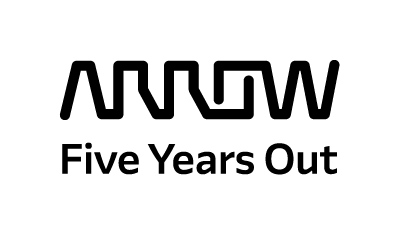The Social Efficiency Dividend
By Carol Baroudi, Arrow Electronics
“Growth” is every company’s goal—including Arrow’s. But it’s also a word that can send shivers down the spines of the sustainability-minded. When growth means increasing consumption, materials and energy spend, I’m not gleeful about the g-word. So you can imagine my delight when an IDC analyst proposed growing economically by tackling waste.
At the IDC Directions conference in Boston last week, IDC senior vice president of enterprise systems and fellow for the Internet of Things (IoT) Vernon Turner brought together two undeniable trends and packaged them in a solution that ought to incite enthusiasm in both sustainability advocates and technologists alike—and engender mutual respect at the same time.
The IoT market appears to be growing much more quickly than even the analysts were predicting just last year. Juniper research says there will be some 38 billion devices by 2020, and IDC is sizing that market at over $7 billion, growing from a market of $2.712 billion in 2015. But just as in the early years of the public Internet, where that money will be found seems to be the question of the day. Many of us remember the dot-com boom, when investors eager to monetize the new phenomenon invested more money than sense chasing their elusive quarry.
So too is the world abuzz with “IoT” without a clear destination in mind. The price of IoT sensors is so low that adding several sensors to a device can greatly improve accuracy and generate a lot more data for that Big Data bucket in the cloud without dramatically increasing the cost of the device. Like the Internet of its namesake, IoT will be a hugely disruptive technology—not as an end in and of itself, but as the enabler of things we have not yet dreamed of.
Simultaneously, another number seems to be growing without any sign of abatement. According to the World Bank, the projection for the creation of urban waste for 2025 is 6,069,705 tons per day. Where on earth do we envision putting it?
According to the United Nations Environment Programme, some one-third of the food produced to feed people—about 1.3 billion tons—is wasted every year. (And don’t forget the energy and water used in food production.) According to Clean Technica, somewhere between 61 percent and 86 percent of the power generated in the U.S. is wasted.
IDC suggests that there’s an opportunity, in part using IoT as a great enabler, to save $4 trillion by eliminating waste. It cites the World Bank’s data on health care as an example. According to the World Bank, 17.1 percent of the U.S. GDP of $16.77 trillion was consumed by health care (2013, the latest data available). Consider the potential of connected patients and evidence-based medicine to eliminate waste in the system and cut that in half—that is nearly $1.5 trillion in value.
So here we arrive at the social efficiency dividend: the more efficiencies we can enact, the greater the social good and the greater the return on IoT-enabled technologies. And that’s the kind of growth that makes me happy. If you know of IoT applications furthering social efficiency, please write to me at [email protected].
Carol Baroudi works for Arrow’s Value Recovery business, promoting sustainability awareness and action. She is the lead author of Green IT for Dummies. Her particular focus is on electronics at the IT asset disposition stage, e-waste and everything connected to them. Follow her on Twitter @carol_baroudi, and connect with her on LinkedIn at www.linkedin.com/in/carolbaroudi.



